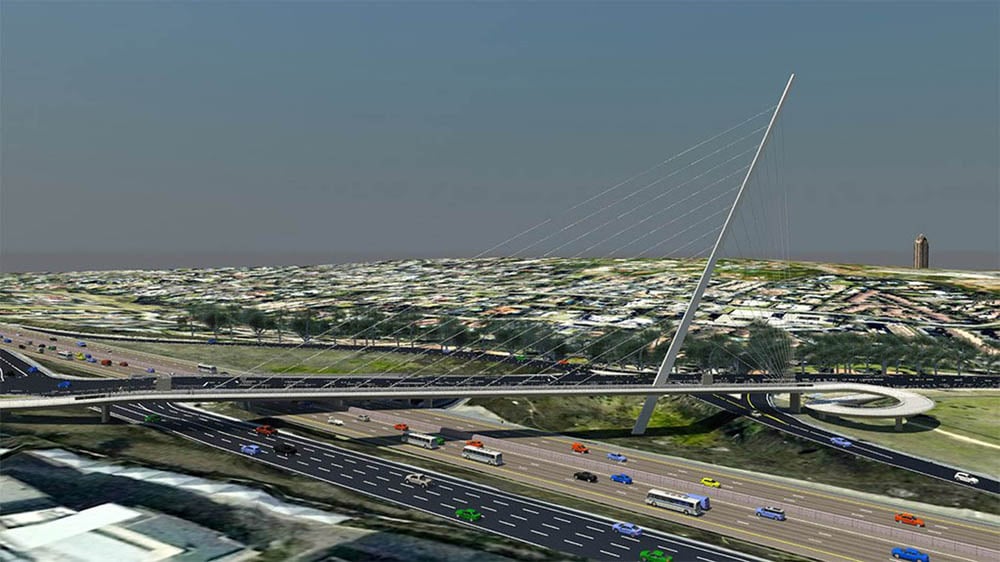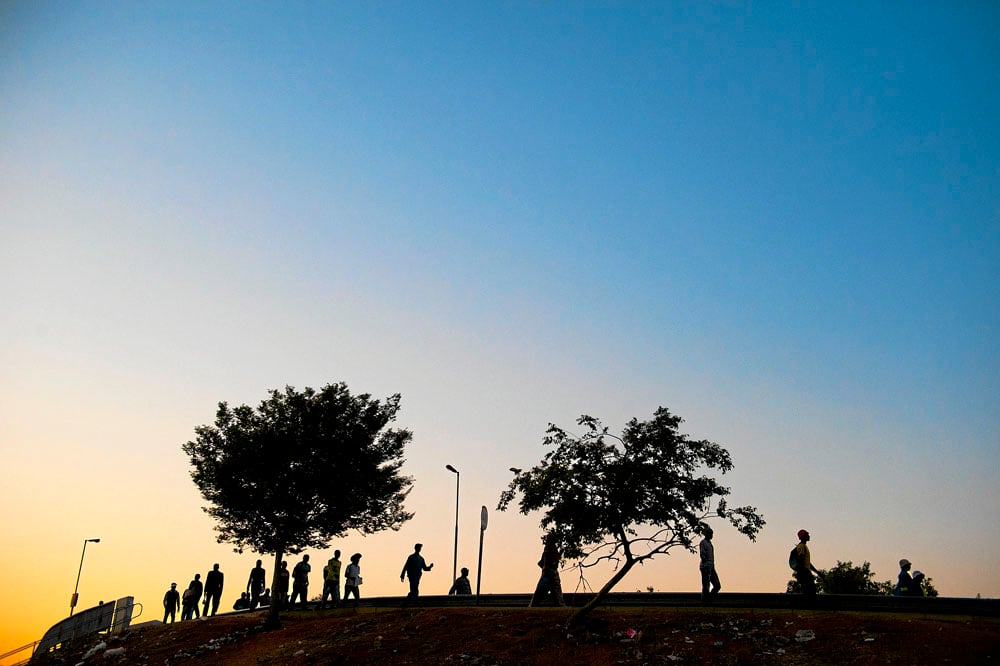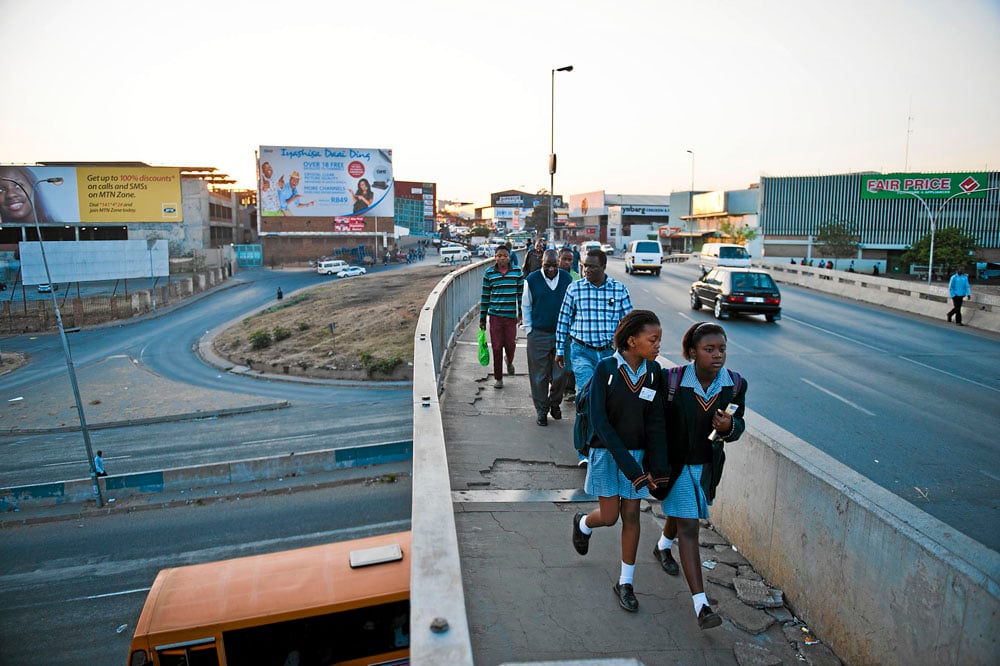A deep downturn is unlikely, analysts say. But, if it does happen, another recession will be even more difficult to recover from.
A few months ago, architect Fanuel Motsepe, who lives in Bramley, a suburb on the Alexandra side of the M1 motorway, was invited by a Belgian friend to take an early morning walk. The pair set off at 4.30am. Their route traced the so-called “Great Walk” out of Alexandra.
Every day about 10 000 people walk and cycle roughly 5km from Alex to Sandton, their route threading through Wynberg before cautiously crossing over the M1 at Grayston interchange into Sandton. Similar acts are performed in countless towns and cities across the country, across velds, through parks and around palisade fences.
In an interview at the recent world congress of the International Union of Architects in Durban, Motsepe recalled his personal wonderment at seeing the great many people walking from Alex to Sandton.
“It never occurred to me, even though I live nearby,” admitted Motsepe, a Basotho hat covering his braided hair. “When I stood on the Sandton side of Grayston, it looked like a thin stream of marchers coming from Alex. The little pavements were chock-a-block.”
By any reckoning the Grayston interchange is an unceremonious gateway. It was built for motorcars to exit, pause and go. But for a few enterprising hawkers, the odd bridge sleeper and prowling metro police, it might be a forgettable pause on the road to elsewhere.
Latent potential
Recognising its latent potential as a gateway as well as the real obstacle it represents to working men and women en route to their daily labours, Johannesburg authorities have started work on a R72-million bridge extension project aimed at offering dedicated pedestrian and cycle lanes.
The iconic status of the new suspension bridge, which will feature a single, obliquely-angled mast, has been preordained.

An artist’s rendition of the Alex-Sandton bridge.
“The city’s Nelson Mandela Bridge has become one of the iconic structures of the southern gateway and this bridge will equally change the city skyline as an important northern gateway,” said Thanduxolo Mendrew, chief executive of the Johannesburg Development Agency, in May.
“At the same time it will serve as an important link between Sandton and Alexandra, to show that the futures of these areas are inherently connected.”
Due to be completed in February 2016, the bridge project forms part of a series of infrastructure upgrades that recognise the needs of Alex’s poorer residents, some who earn as little as R1 500 per month and rely on self-propulsion to get around.
Key projects
Other key projects include a new public transport interchange at Watt Street in Alexandra, as well as a 3m-wide pedestrian and cycle way starting at No 3 Square in Alexandra and ending in Linden Street in the Sandton CBD.
The route will include solar powered LED street lighting, pedestrian pause points, vendor booths, security and a bridge deck planted with trees and shrubs.

The long walk from Alexandra will offer pedestrian and cycle lanes for commuters when the new R72-million bridge extension project is complete. (Photos: Delwyn Verasamy, M&G)
“The planned pedestrian bridge will provide safe and convenient pedestrian and cyclist access into Sandton,” said Noel Reddy, project manager of Royal HaskoningDHV, the international consultancy awarded the contract to develop this non-motorised infrastructural project.
“It literally bridges the gap between two communities with opposite economic backgrounds whilst creating a visual gateway into the economic hub of the country.”
The initiative forms part of executive mayor Parks Tau’s Corridors of Freedom legacy project, a series of targeted road infrastructure projects aimed at alleviating Joburg’s spatial fragmentation, a defining bequest of apartheid urban planning.
Grayston interchange
The Grayston interchange, which has undergone a number of facelifts as Sandton has consolidated its place as Jo’burg’s second CBD, continues to reiterate these divisions.
Largely, this has to do with the way in which the busy freeway that the bridge traverses was organised. Conceived in the mid-1950s by urban planner Maurice Rotival, who worked with a group of American consultants, Jo’burg’s inner-city motorways were completed in phases starting in 1966.
In his book Johannesburg Transition (2008), architecture critic Clive Chipkin remarks how the M1 and M2 gave form and meaning to “an amorphous, spread-eagled city on the plains”.

Pedestrians have to walk roughly 5km to get from Alex to Sandton.
But these roads also achieved other ends.
“All the advantages and betterment of the huge capital expenditure accrued to the white areas,” states Chipkin. “The motorways, conspicuously, did not connect into the vast black ghetto locations. In part, they acted as a visual and movement barrier to reinforce segregation.”
For his part, Motsepe welcomes the new northern bridge. He described it as “long overdue” and insisted Sandton’s well-heeled should embrace it. Underscoring the planners’ optimism, he said the expanded bridge could help “eradicate the colour identification of place, one that sees Alex as black and Sandton as white, as well as address classist separation”.
Sad model
But, he said, the Nelson Mandela Bridge in Braamfontein, which the new bridge in Sandton hopes to match in significance, is a sad model to duplicate.
More a symbolic statement than a utilitarian piece of civil engineering, its single-lane dual carriageways are often congested at peak hour. The city is busy with a plan to create concrete decks over the Braamfontein rail yard between Park Station and the M1, with the Nelson Mandela Bridge enshrined as a floating motif in the middle.
The Grayston bridge is yet to prove itself. While its ambition is tangible and can be measured in how much concrete and fiscal commitment it consumes to achieve its optimistic outcome, the success of this human-friendly project will depend on function outweighing symbolism. Its success, which is not guaranteed, will be a milestone in the rehabilitation of this motorised city, where cars signify so much.
Sean O’Toole is a writer based in Cape Town.
